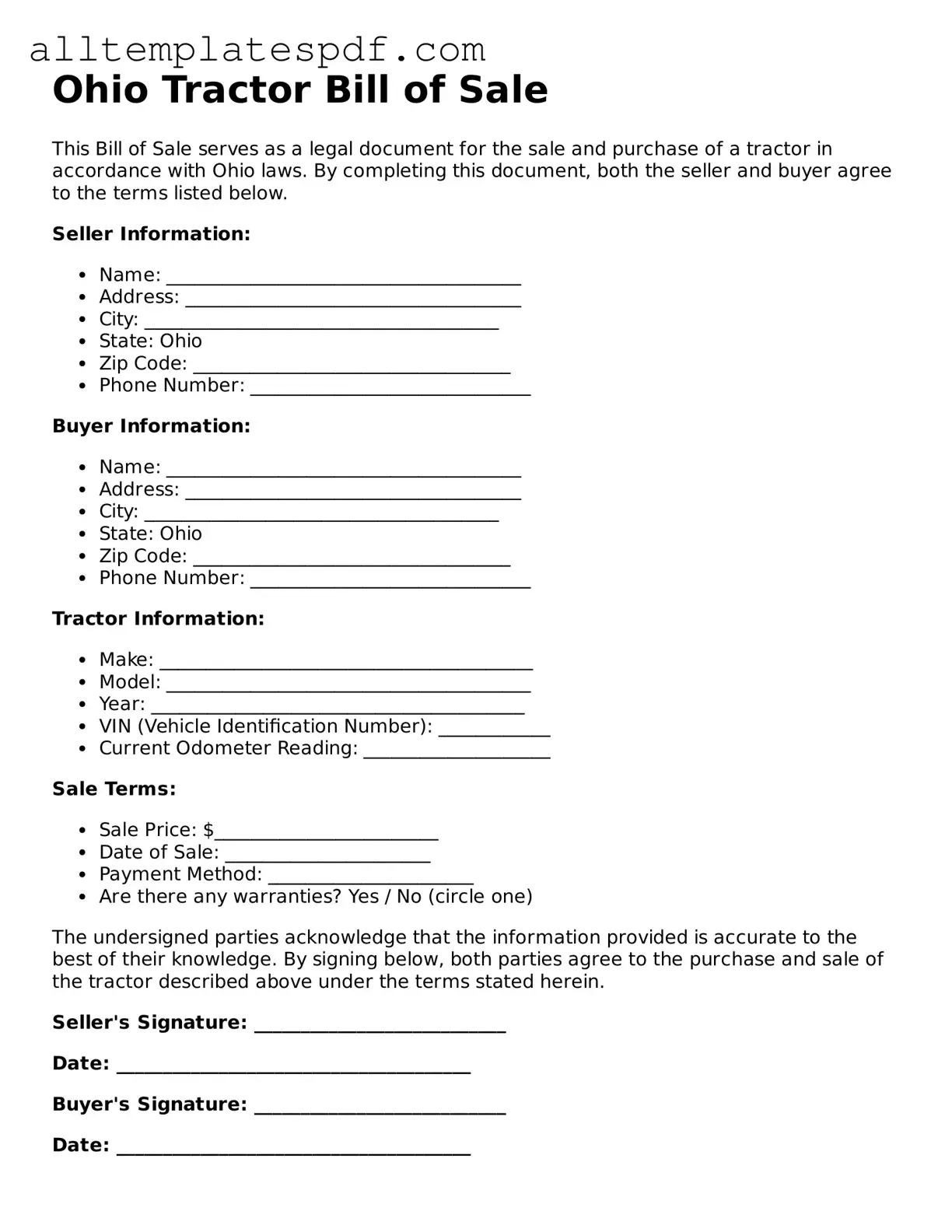Filling out the Ohio Tractor Bill of Sale form can seem straightforward, but many people make common mistakes that can lead to complications down the line. One frequent error is failing to include all required information. Buyers and sellers must ensure that they provide complete details, including names, addresses, and contact information. Missing any of these elements can result in confusion or disputes later.
Another common mistake is neglecting to accurately describe the tractor being sold. This includes not only the make and model but also the Vehicle Identification Number (VIN). An incomplete or incorrect description can create issues with registration and ownership transfer.
Many individuals also overlook the importance of signatures. Both the seller and buyer must sign the form for it to be legally binding. Failing to obtain the necessary signatures can invalidate the sale, leaving both parties at risk.
Another mistake involves not dating the document. The date of the sale is crucial for legal purposes and for tracking the ownership history of the tractor. Without a date, it may be difficult to establish when the transaction occurred.
People often forget to include the sale price. This information is essential for tax purposes and can affect future transactions. Leaving it blank or writing an incorrect amount can lead to misunderstandings.
Additionally, many individuals do not keep a copy of the completed form. Retaining a copy is vital for both the buyer and seller. It serves as proof of the transaction and can be useful in case of any disputes.
Some sellers may fail to disclose any liens or encumbrances on the tractor. Transparency is key in any sale. Not revealing such information can lead to legal issues if the buyer later discovers the tractor is not free and clear.
Another common oversight is not checking for typos or errors. Simple mistakes in names or numbers can lead to significant problems. It's always wise to review the document carefully before submitting it.
People sometimes rush through the process without understanding the implications of the sale. Taking the time to read the form and understand its requirements can prevent many issues. Knowledge is essential to ensure a smooth transaction.
Lastly, individuals often fail to consult with a legal expert if they have questions. Seeking advice can clarify any uncertainties and help ensure that the form is filled out correctly, protecting both parties involved.
